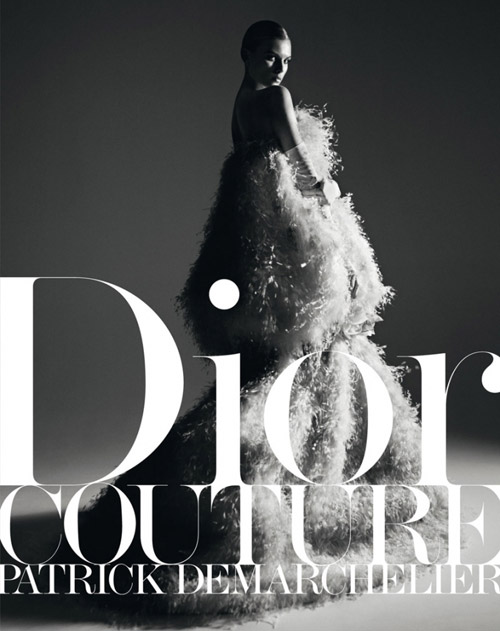The Fantastic World Of Dior Couture
By Bernie Rothschild
Rizzoli published the book Dior Couture last autumn which contains the greatest hits of the Maison de Christian Dior. The book showcases the house from the revolutionary New Look of 1947 to the hip and beatnik designs of Yves Saint Laurent, from the simplicity and practicality of Marc Bohan on to the colorful Gianfranco Ferre, and ends with the glorious years of John Galliano. Patrick Demarchelier captured the most fantastic dresses in the most exquisite locations in France, Shanghai, and New York, as worn by the most beautiful female models in the world from Gisele Bündchen to Charlize Theron. For V Magazine's model issue last year, Carine Roitfeld styled an editorial featuring the dresses of Dior, many of which were designed by John Galliano.
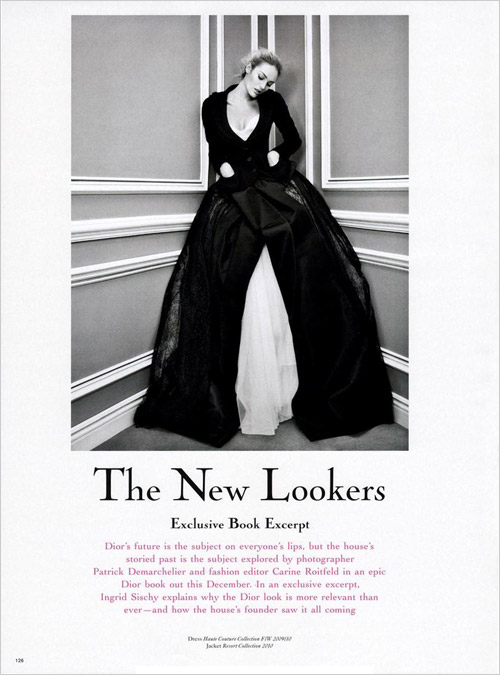
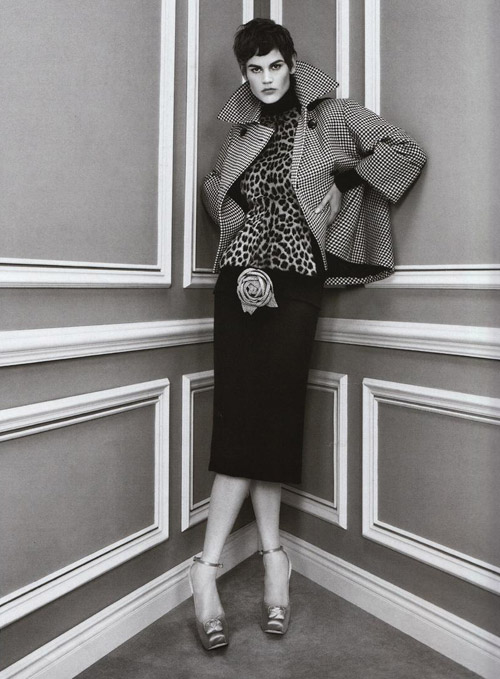
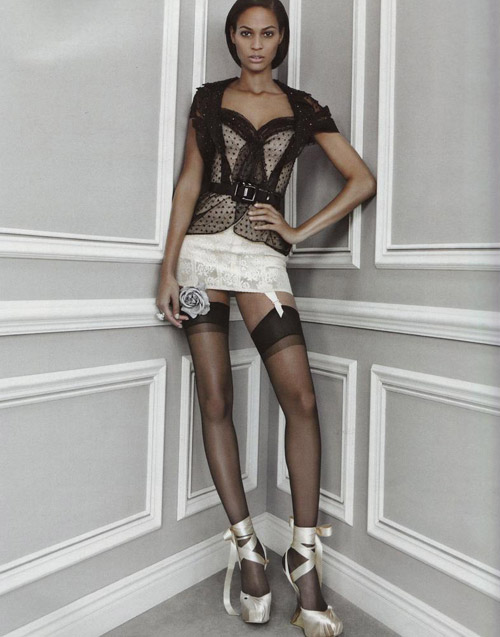
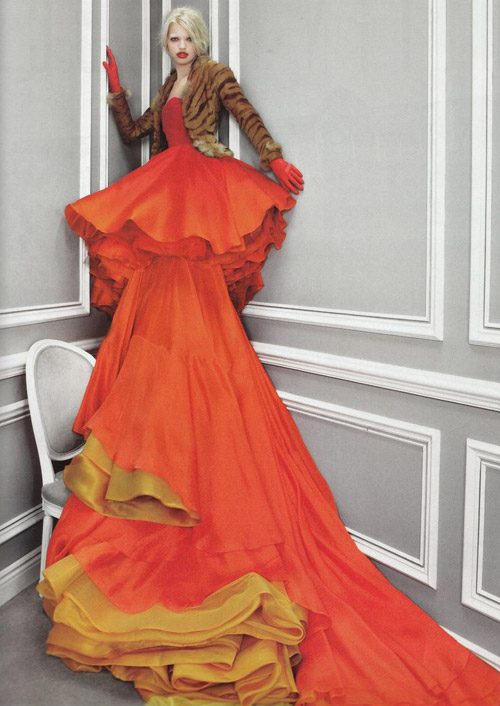
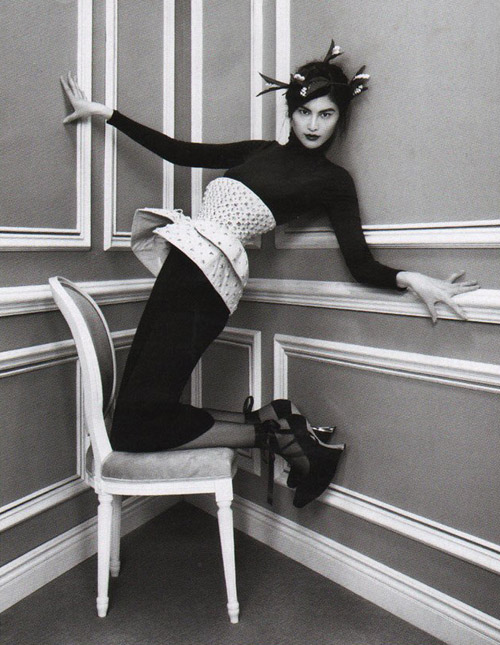
Christian Dior is known as one of the greatest couturiers of our time. He defined glamour around the world after the devastating war with his New Look that set the standard for women everywhere. It was 1947, two years after World War II. The world was at peace at last but women all over the world were experiencing an identity crisis, they were completely lost and unsure as to what to wear. Then Dior showed his first collection. The dresses featured the waist and the bust with accentuated jackets and above-the-knee skirts. That was then controversial and some even considered it vulgar. The collection was originally called "Corolla" but then the legendary Carmel Snow of Harper's Bazaar announced to Mr. Dior and the press that "It's such a New Look!" and the glamorous style of the century was born. Everyone from all walks of life copied and followed the New Look, although some criticized Dior for using expensive fabrics while others did not have enough to eat. The French, however, hailed Christian Dior as a hero for once again putting Paris on the map and for his fashion influence in the 1940s and the 1950s. The New Look was highly praised and popular, Mr. Dior even presented it to the French Embassy in Britain with Elizabeth, the Queen Mother; Marina, the Duchess of Kent; her sister Olga of Yugoslavia; and Princess Margaret (herself a great supporter of Dior) as the audience. Rumors suggest that the then Princess Elizabeth (now the Queen) stopped by to see the collection as well. Christian Dior designs were worn not just by the blue blooded women of the world but also the most glamorous movie stars of that era: Garbo, Dietrich, and Monroe, to name a few. But all great things are not meant to last... sadly a mere decade after changing the world of fashion with his vision, Christian Dior died of a heart attack.
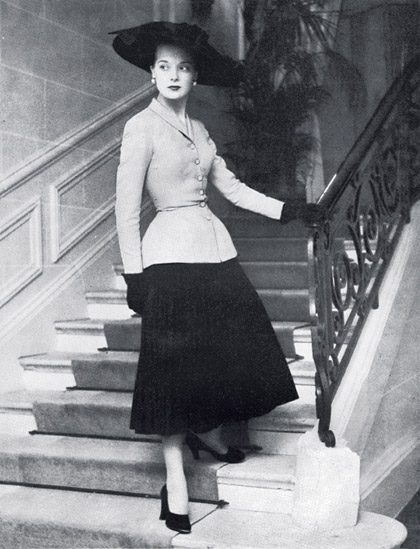
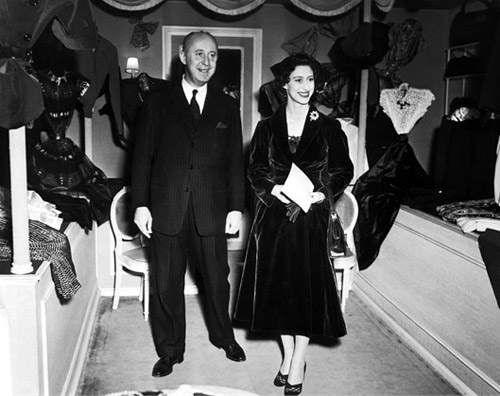
At the tender age of 21, Dior's assistant, Yves Saint Laurent, took over as the house designer. His first collection in 1958 featured a softer version of the New Look and the French hailed YSL as "The man who saved France" as well as the savior that rescued the Maison Dior from the verge of bankruptcy. Just like Mr. Dior in 1947, Saint Laurent's first collection in which he showcased the trapeze line was praised by the press. They said that "Saint Laurent has saved France — the great Dior tradition will continue." His design had caused an enormous commotion. He even went out to the balcony to wave to the cheering people as if he was the new king of France. Notably Saint Laurent also designed the wedding dress of Farah Diba, the last empress of Persia.
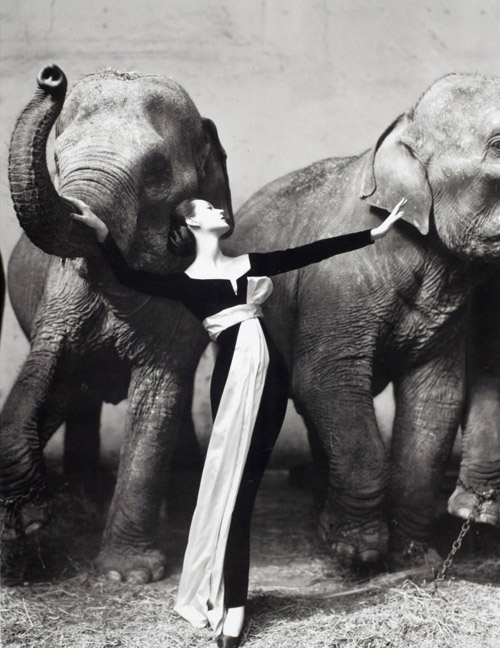
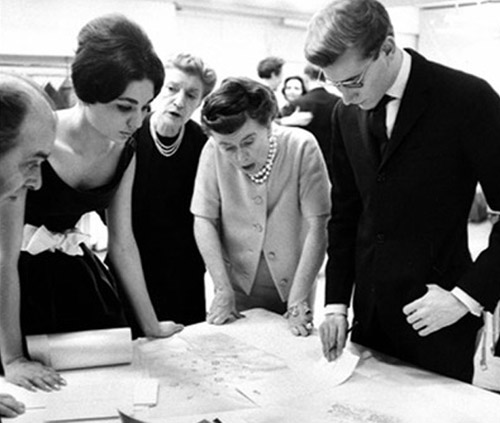
Another high point in the history of Dior came in the spring of 1997, when British designer John Galliano was chosen to head the house. Originally from Givenchy, the owner of LVMH, Bernard Arnault, chose him to succeed Gianfranco Ferre as the chief designer of Dior. Known for his theatrical and feminine designs, Galliano's first collection was praised for restoring the beauty and the elegance that had been missing from Dior. His designs were inspired by historical figures such as Cleopatra, Marie Antoinette, and Pocahontas, as well as romantic novels and poetry. He even glamorized homelessness and poverty in one of his collections. Celebrities embraced the beauty of Galliano's designs. But the decadence, eccentricity, and theatrical nature of his shows caused critics to question the wearability of his designs, insisting that he was not a designer but a costumier. Nevertheless the Dior couture presentation was the hottest show in town.
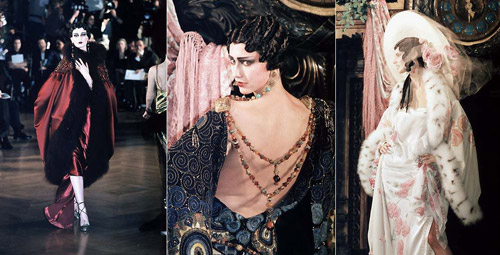
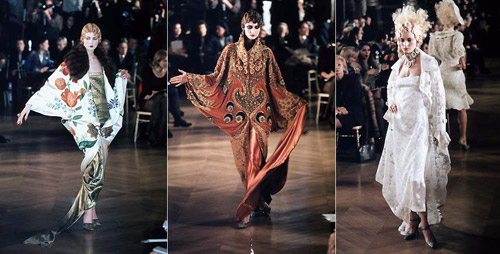
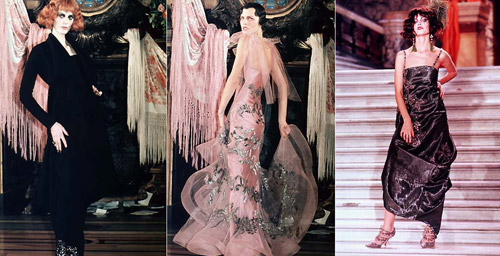
In January 1998, Galliano's spring 1998 couture collection based on the Italian eccentric Marchesa Luisa Casati inspired the world to go crazy over him, just like the moments of Christian Dior in 1947 and Yves Saint Laurent in 1958. The collection showcased a heavily embroidered Oriental coat, suits referencing the Ballets Russes and Edwardian styles, and an updated version of the Dior "Junon" dress. The show was so spectacular that it was widely considered the collection of the season. Galliano was also recognized by the CFDA, winning the award for International Designer of the Year, and showed this epic collection that amazed the American audience. John Galliano didn't just return the couture line to profitability but also revived Dior's ready-to-wear market that during his first years had no difference from his couture collection. In the summer of 1999, Galliano's contract with LVMH was renewed and this time he was put in charge of everything... the store and window design, the accessories, the lingerie and beach wear, the ad campaigns... For the turn of the millennium, he gave the Dior woman a new sex appeal by embracing the style of the street, from drag queens to hip-hop, from BDSM to rock 'n' roll. Galliano proved to his critics that he could design sportswear as well. Note also that Dior under Galliano is one of the many design houses who embraced the logomania of the year 2000.
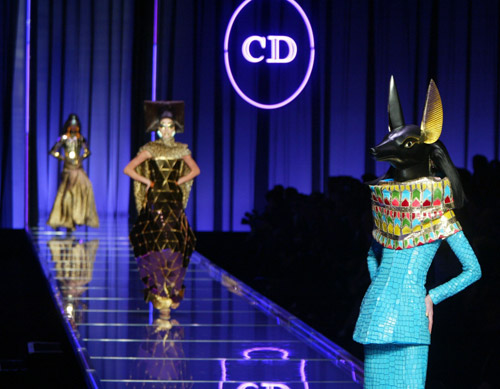
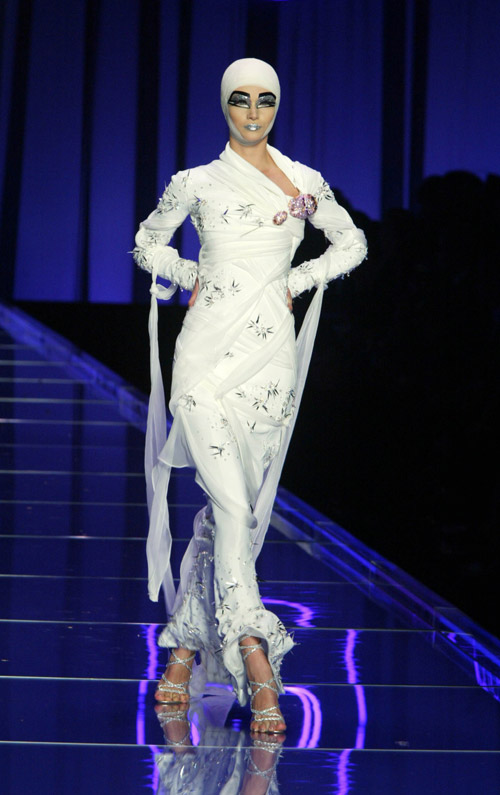
His tradition of theatrical femininity continued with Galliano's spring 2004 couture collection that was inspired by his trip to Egypt, it was the most celebrated collection of the new millennium for the House of Dior. The pyramid-shaped clothes with the Egyptian Nefertiti headpiece crowns and the glamour of the Penn and Avedon photos of the 1950s. The box-shaped hair from the collection took Orlando Pita three days to create. The innovation of Galliano in this collection makes it one of the most memorable periods of his reign at Dior. Even Bernard Arnault once compared him to Christian Dior. But Galliano's tenure at Dior ended in an ill-fated manner, the anti-semitic remark that he made while drunk induced LVMH to cancel his contract, although it had been rumored for a long time that they had wanted to oust him. He was hurt and humiliated by the situation and also by his legion of followers. It was the end of an era. Everyone is still waiting to see what Galliano's next step will be. His talent is such a shame to be wasted. Dior won't ever be the same from the moment he left. Will he suffer a similar fate to Coco Chanel who was accused of being a Nazi collaborator? (Keep in mind that after a few years she made her marvelous comeback). His admirers wish him the best and only time can tell but I certainly hope he will have a triumphant return to the fashion world soon.
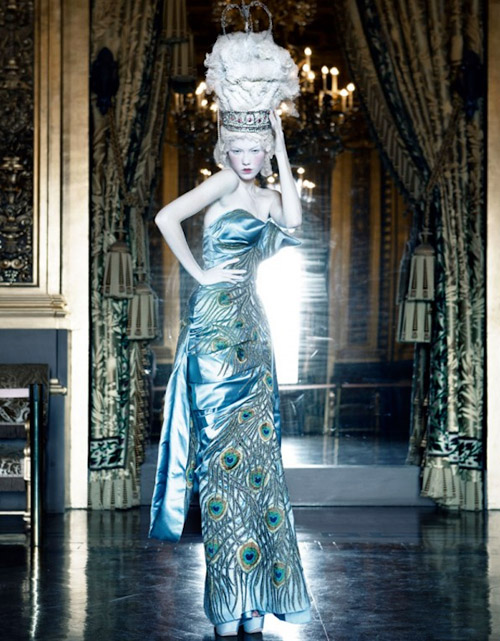
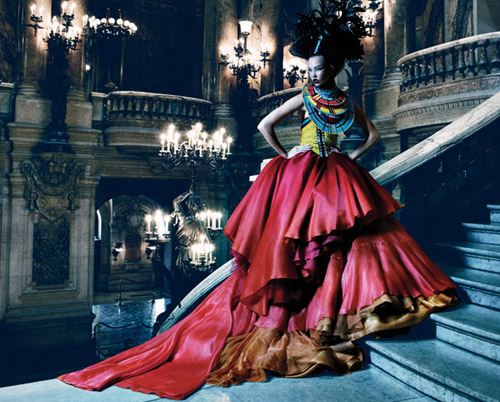
connect with iwtbar bloglovin | facebook | pinterest | tumblr | twitter
Dior photographs © 2011 and 2012 Condé Nast, Christian Dior, Rizzoli, The Metropolitan Museum of Art, and V Magazine, LLC, and courtesy of tumblr. "Dovima and the elephants" designed by Yves Saint Laurent under Christian Dior. Photo by Richard Avedon.
